You’ve probably read about, perhaps dined out on, or, if you’re brave, experimented with ‘nose to tail’ cooking in recent years. This food movement, in the spirit of most great movements before it, is all about calling out inequality, promoting societal change and engendering personal improvement in the process. Specifically, ‘nose to tail’ advocates, like renowned English restaurateur Fergus Henderson, espouse the virtues of no part of an animal going to waste when the beast’s number is up. Not only is this the most sustainable way for we humans to eat meat, we can also stock up on a motherlode of nutrients in the process. From the point of view of addressing inequity, though, ‘nose to tail’ cooking is simply a matter of good manners. As chef Henderson says in his seminal book The Whole Beast, “if you’re going to kill the animal, it seems only polite to use the whole thing!”
Perhaps unsurprisingly, as society advances ever forward on the great path to universal equality, we’re now being encouraged to mind our Ps and Qs and spare a thought for our fruit and veggies, too. Because, quite apart from anything else, carrots have feelings too, folks!
Jokes aside, if you grew up with a parent or grandparent who lived through the Great Depression, the underlying waste-busting message behind this latest movement – perhaps best described as eating “root to rind” – might just trigger a childhood memory of when you were scolded for carelessly throwing out a tin of baked beans when there were still a few stubborn beans stuck to the inside wall. Thankfully, I’m not here today to force canned food on you nor dob on you. According to Melbourne dietician, Melanie McGrice, there are umpteen benefits aside from “waste not, want not” if you’re keen to make your fresh produce go the extra mile.
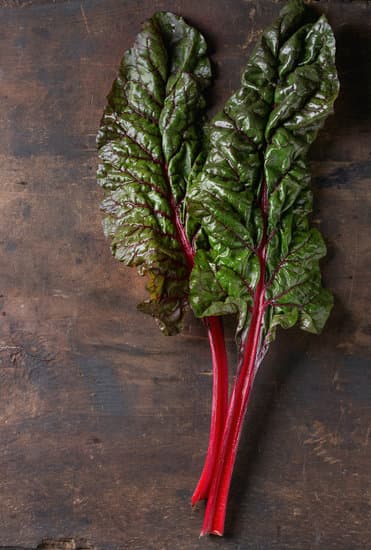
Beetroot leaves
We have a lot to be proud of as Australians when it comes to our use of the humble beetroot. Our forebears broke new ground in the 1940s when they put beetroot on hamburgers to prank visiting American troops. It’s no joke today, of course: slapping a slice of beetroot on a burger is a great Aussie tradition that we claim with almost global exclusivity. In recent years, though, it seems we’ve been resting on our laurels and the next stage of Aussie beetroot innovation must surely be the exploitation – and, for our indomitable chefs, profitisation – of its leaves. When stir fried or tossed into a salad, leafy beetroot greens taste silky sweet and, Melanie McGrice adds, “they’re on-par with kale as a source of antioxidants and phytonutrients.”
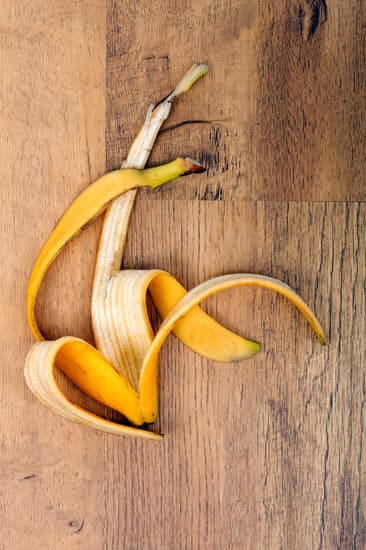
Banana skins
Banana skins have long been maligned as slip hazards, but such a myopic view of their potential is, quite literally, skin deep. “They’re a great source of gut-nourishing fibre to consider cooking with, especially given most Australians aren’t currently getting enough fibre in their diet,” Melanie says. Thanks to their density, banana skins can be used as satisfying alternatives to more traditional bulking or thickening ingredients in smoothies or when baking. For best results, only use the skins of ripened bananas and boil to soften before adding them to your desired dish. Hot tip, they make a perfect addition banana bread.
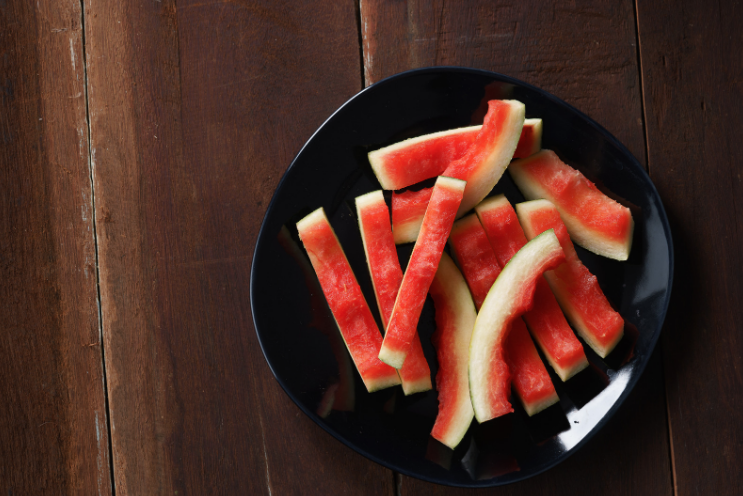
Watermelon rind
Do Harry Styles proud and turbo-charge your next “watermelon sugar high” by keeping the rind in play. Melanie attests, “watermelon rind contains an amino acid called citrulline which helps improve our body’s ability to get rid of waste”. Try grating the rind into a stir fry or serving as a slaw.
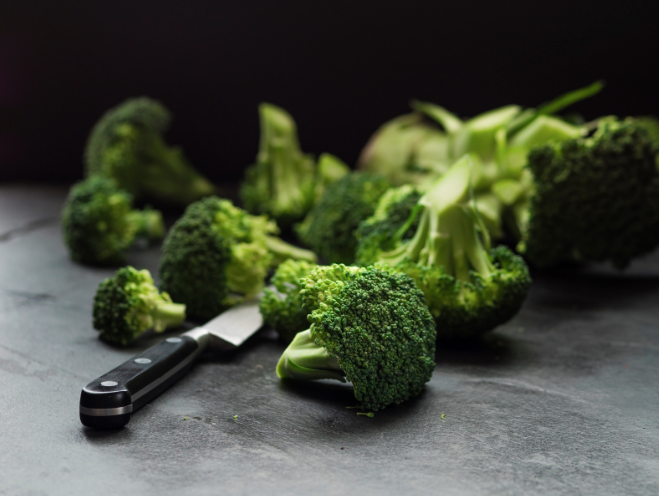
Broccoli stalks
Research conducted last year at Edith Cowan University in Perth found that eating larger helpings of some of our least favourite cruciferous vegetables, like broccoli, can help ward off blood vessel disease. But if the thought of eating more broccoli doesn’t set your tastebuds on fire, perhaps try simply eating more of what’s there. Melanie says, “broccoli stalks are a fantastic source of fibre but they’re not so fibrous that they’re uncomfortable to eat”. Have a go at slicing and baking the stalks, leaving the skin on, and adding them to the side of your next roast dinner. Or, simply peel the stalk, cut it up into cubes and bring to the boil in a hearty vegetable soup.
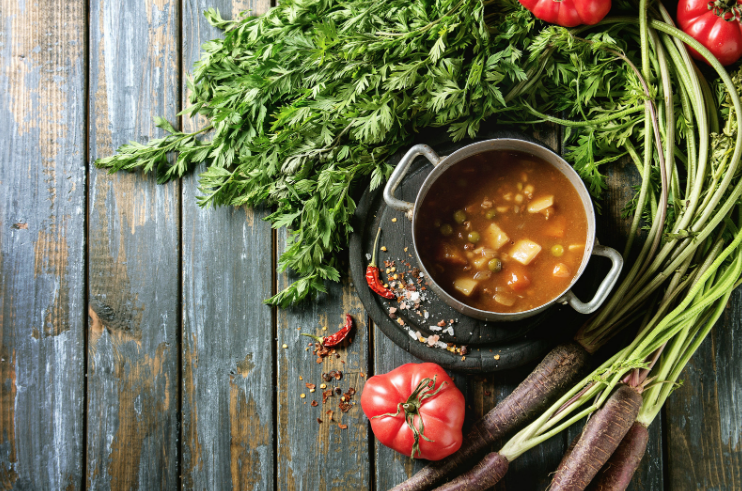
Carrot green tops
Bugs Bunny may never have never been caught on camera chowing down on the leafy green tops of his beloved carrots, but Melanie believes shouldn’t stop you from having a go. “Carrot greens contain around four times as much vitamin c as the root,” she says. Chopped up, carrot greens make a great alternative to parsley. Worth sprinkling into your next homemade stock or blending into a peerless pesto.
So next time you’re walking down the fresh produce aisle of your local supermarket, I encourage you to ‘lean in’ when you arrive at the carrots. Then, take a leaf (no, not literally: veggie sampling is petty theft) out of ‘Moving Pictures’ and later Shannon Noll’s lyric book and “listen, as they whisper… what about me?!” If you do decide to take one of those carrots home, remember, it seems only polite to use the whole thing.
Check out the below recipes for inspo for your next root to rind dish.
RECIPE LINKS
Beetroot leaf salad: https://www.epicurious.com/recipes/food/views/roasted-beet-salad-with-oranges-and-beet-greens-109070
Carrot top pesto: https://yupitsvegan.com/carrot-top-pesto/
Broccoli stalk slaw: https://www.foodnetwork.com/recipes/anne-burrell/broccoli-stem-and-carrot-slaw-recipe-1924352
Watermelon rind curry: https://myheartbeets.com/watermelon-rind-curry/
Banana skin cake: https://www.delicious.com.au/recipes/banana-peel-cake/4azeiynq
